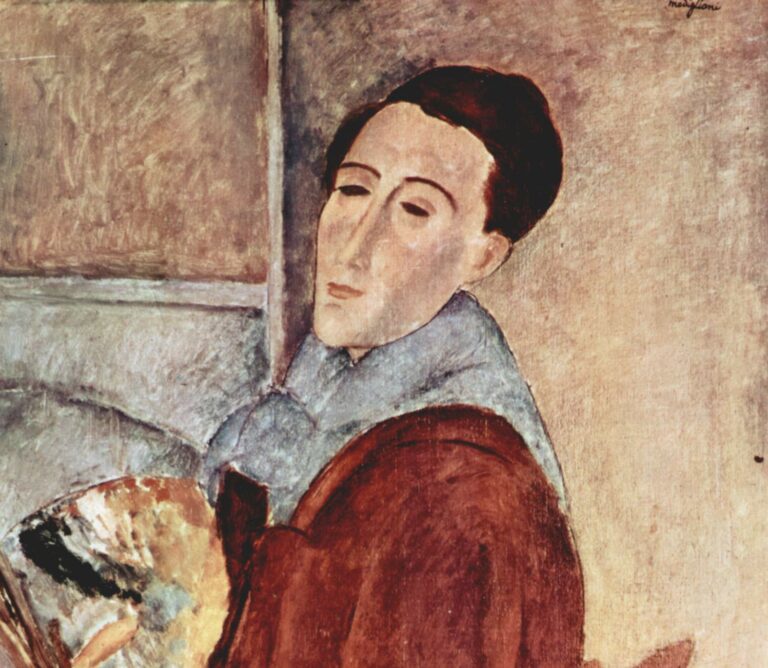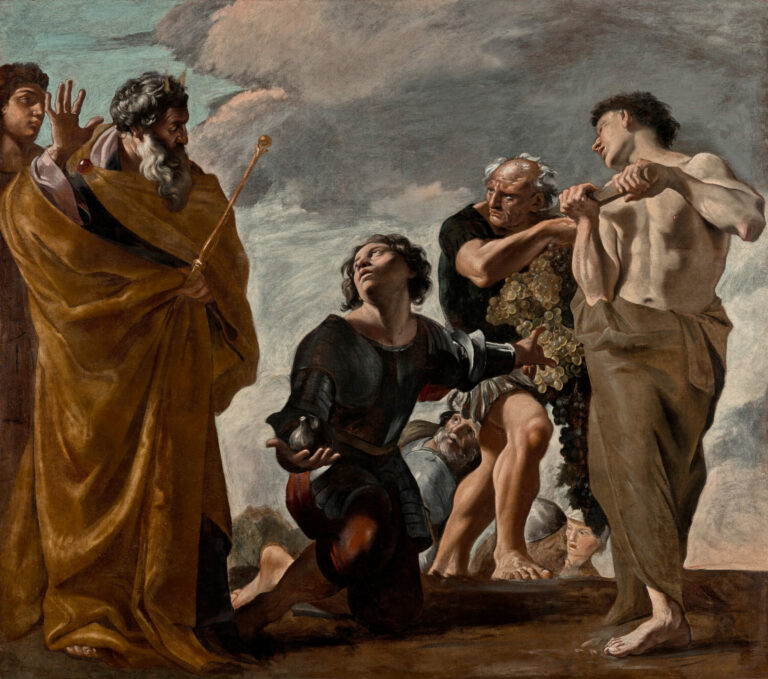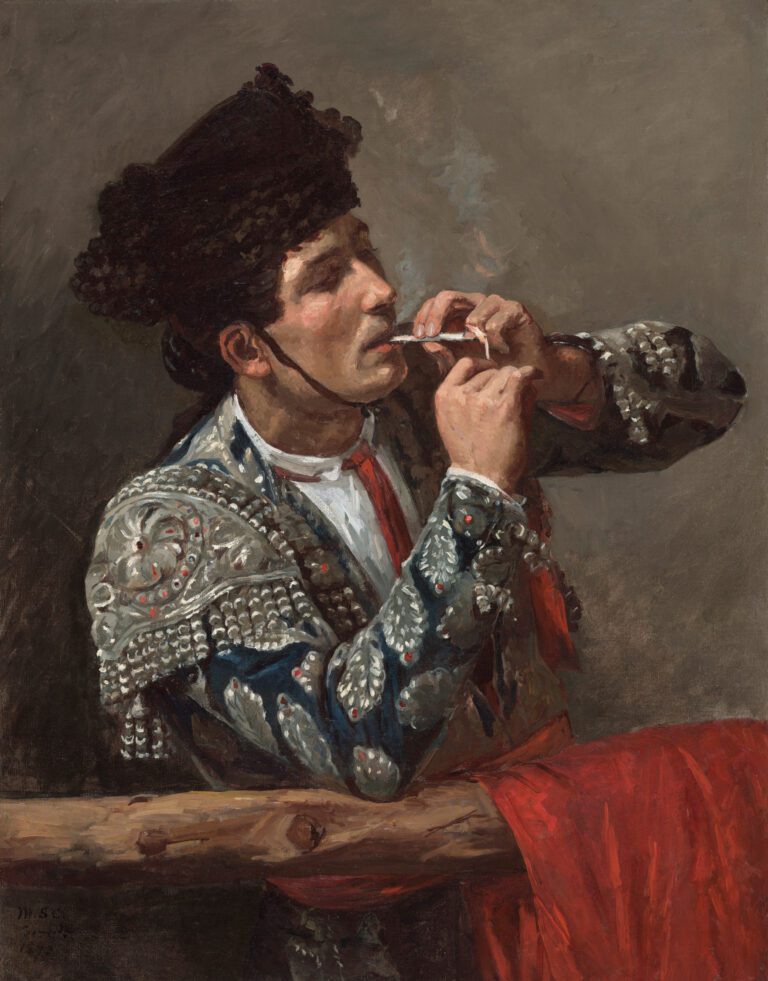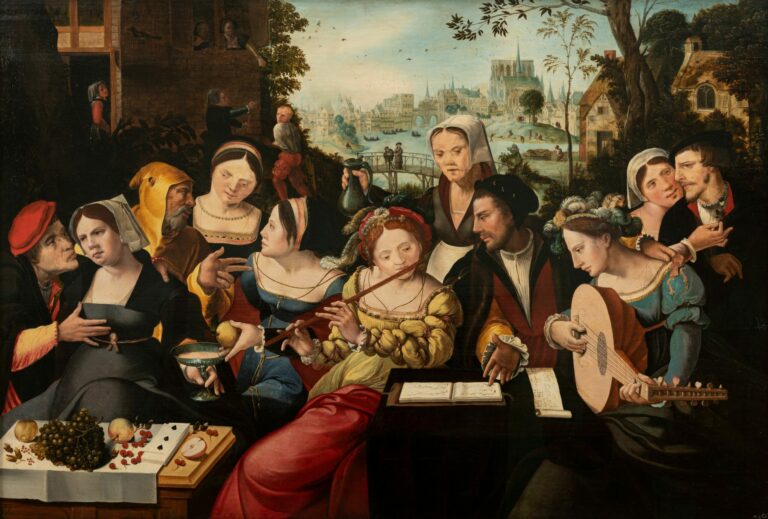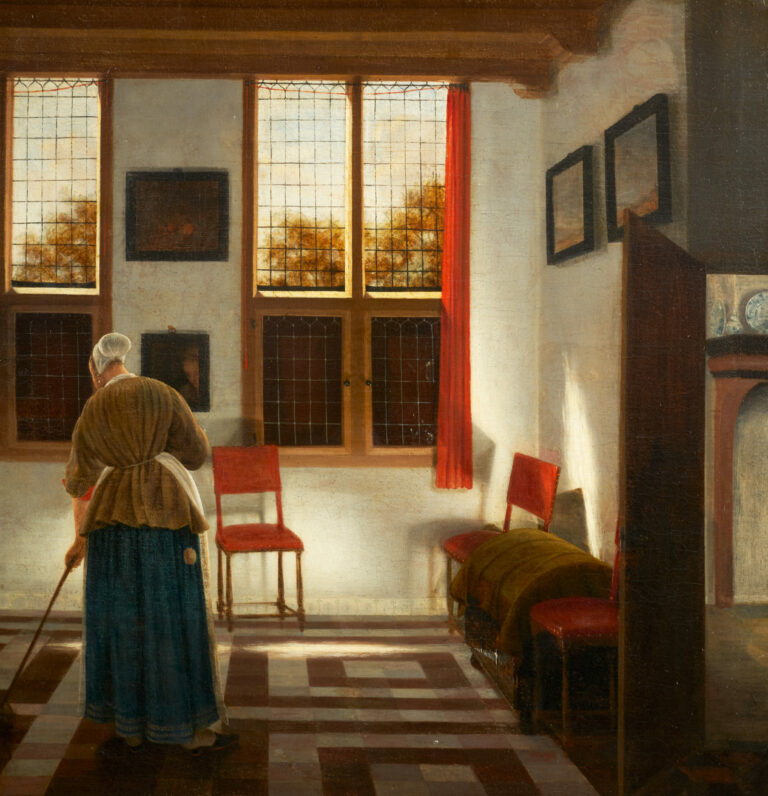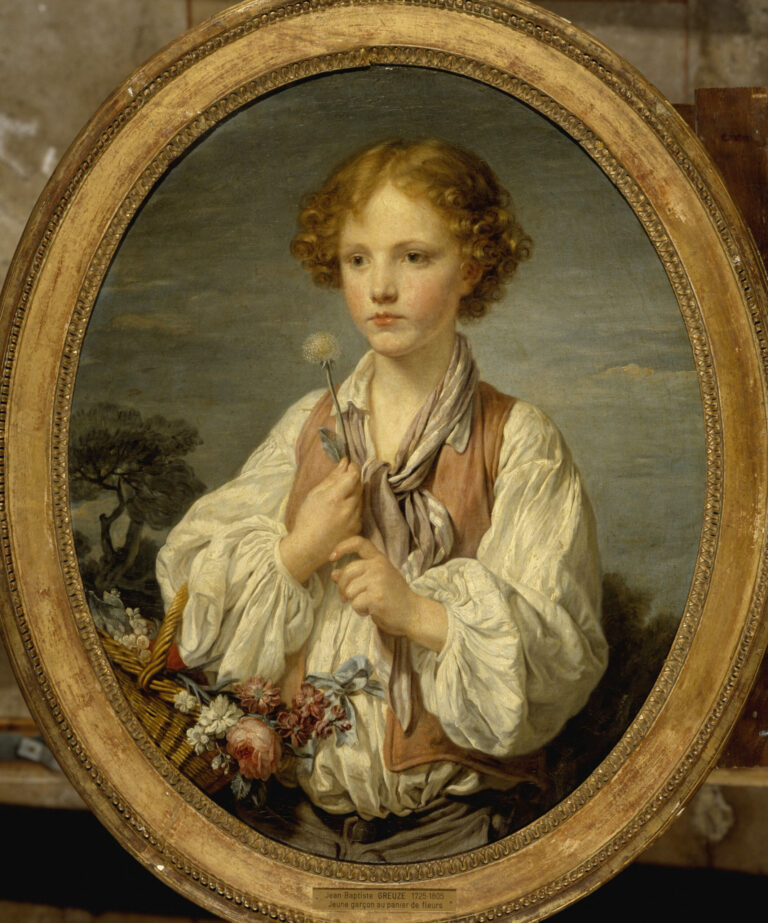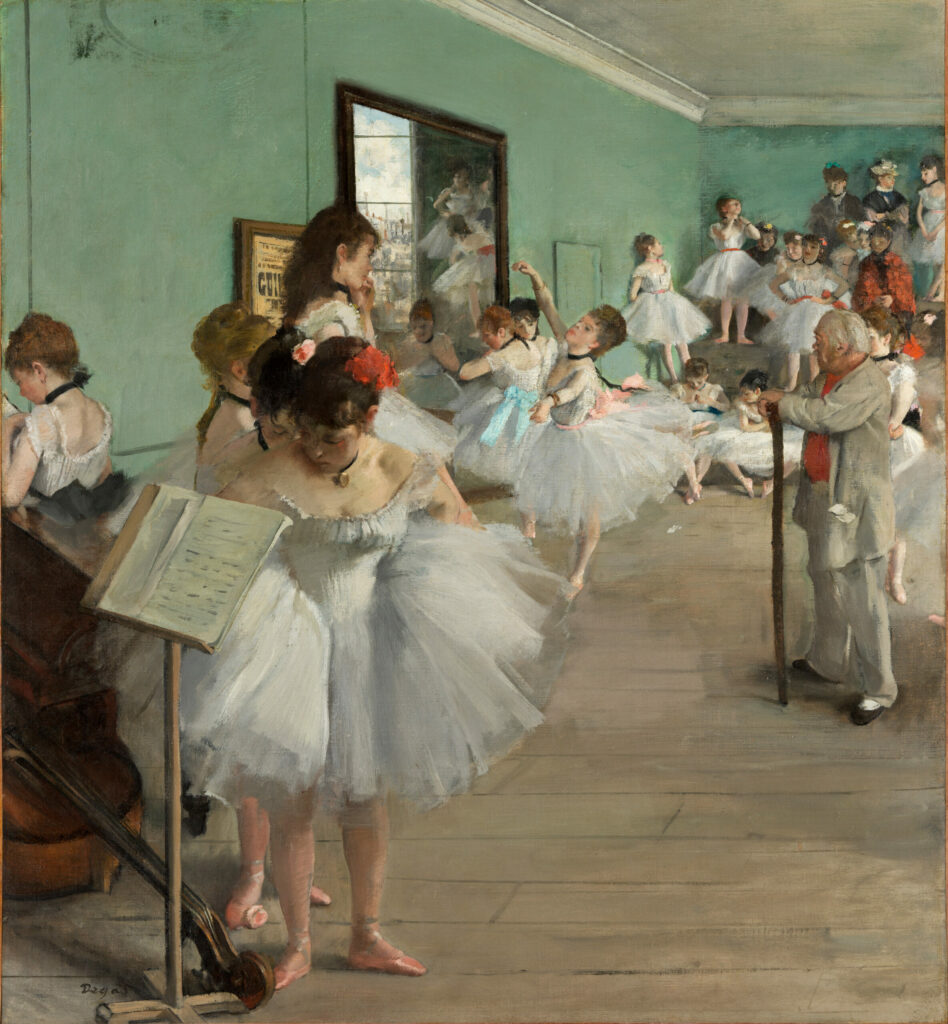
A Window into the Ballet World. In this luminous canvas, Degas immerses us in the demanding world of Parisian classical dance. “The Dance Examination” captures the decisive moment when a young ballerina’s future hangs in the balance.
The composition orchestrates bodies in motion within a light-filled studio space. The white tutus burst forth like brilliant accents against the subtle palette of greens and ochres. The slightly elevated perspective creates a visual choreography where each figure finds its place in a masterfully orchestrated balance. Degas brilliantly captures an atmosphere that mingles tension with grace: in the foreground, a dancer bends her face downward, while at center, another executes a movement under the expert eye of the cane-holding master. The mothers—anxious spectators in dark attire—form a narrative frieze that reminds us of the social stakes in this seemingly light scene.
Essential Information
- The Dance Class, by Edgar Degas, 1874
- Dimensions: 83.5 x 77.2 cm
- Location: The Metropolitan Museum of Art, Fifth Avenue, New York, Gallery 815
- https://www.metmuseum.org/art/collection/search/438817
Edgar Degas (1834-1917) was one of the most penetrating observers of Parisian life during the Second Empire and Belle Époque. Though associated with the Impressionists, he preferred to define himself as a “realist” or “naturalist.” His fascination with the world of the Opera, particularly ballet, which he frequented assiduously for nearly forty years, allowed him to create a unique visual universe.
Degas, an exceptional draftsman trained in the classical school, developed a modern vision where photographic framing, unexpected perspectives, and meticulous analysis of movement combine with a deep psychological understanding of his subjects. This painter of modern life revealed, like no other, the poetry hidden behind the apparent banality of everyday life and the constant effort concealed beneath the ethereal grace of dancers.

